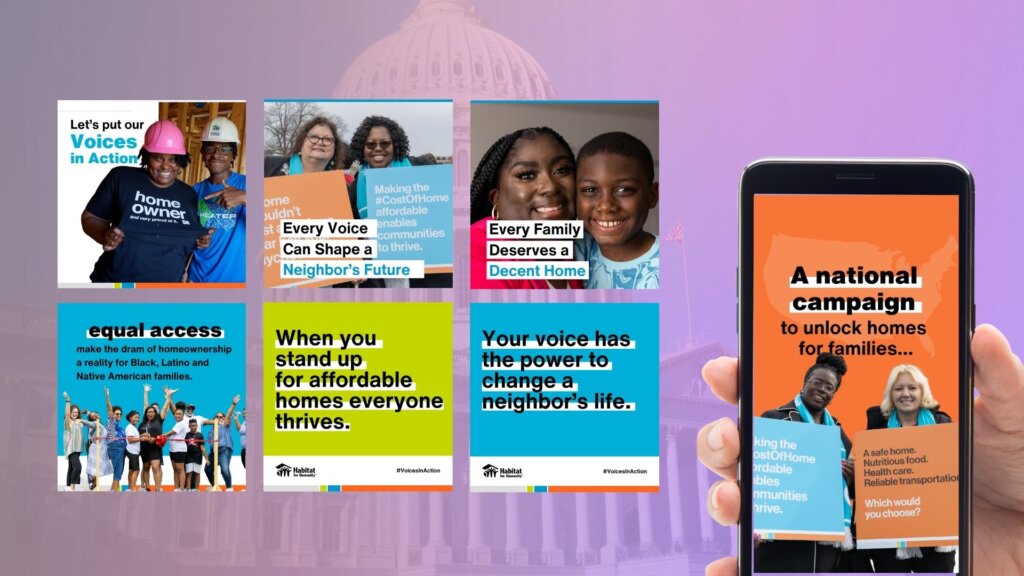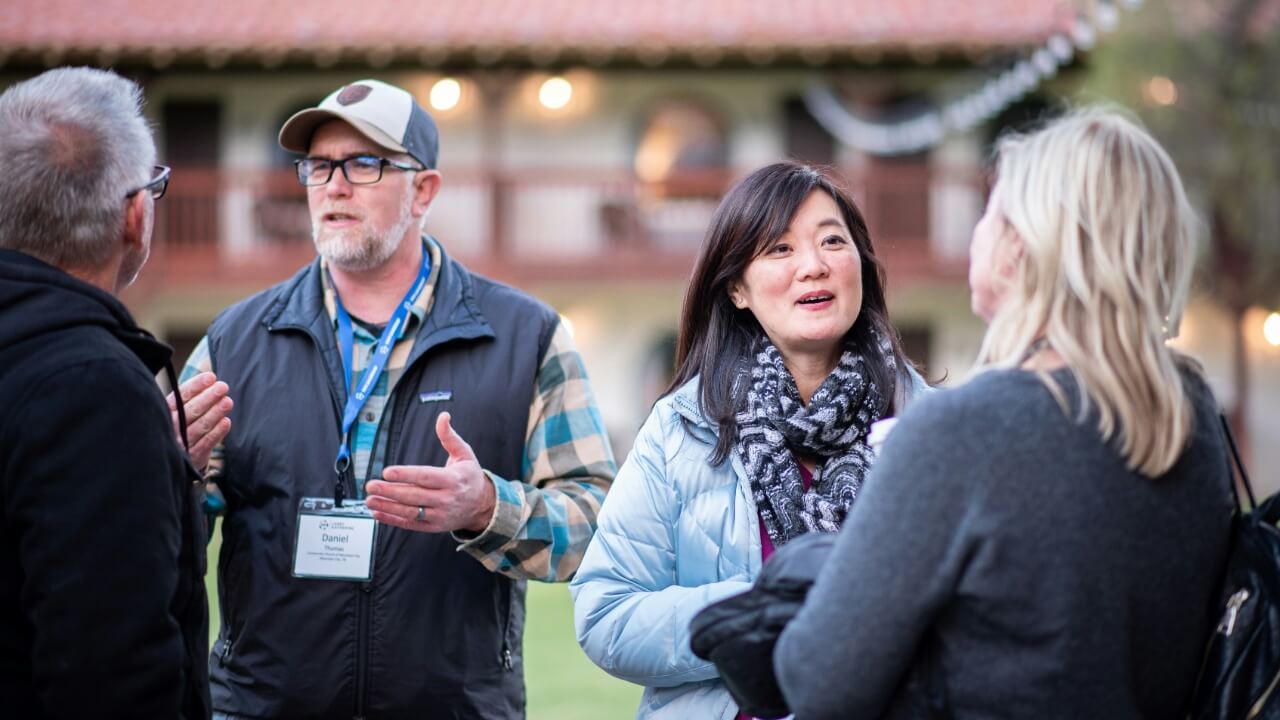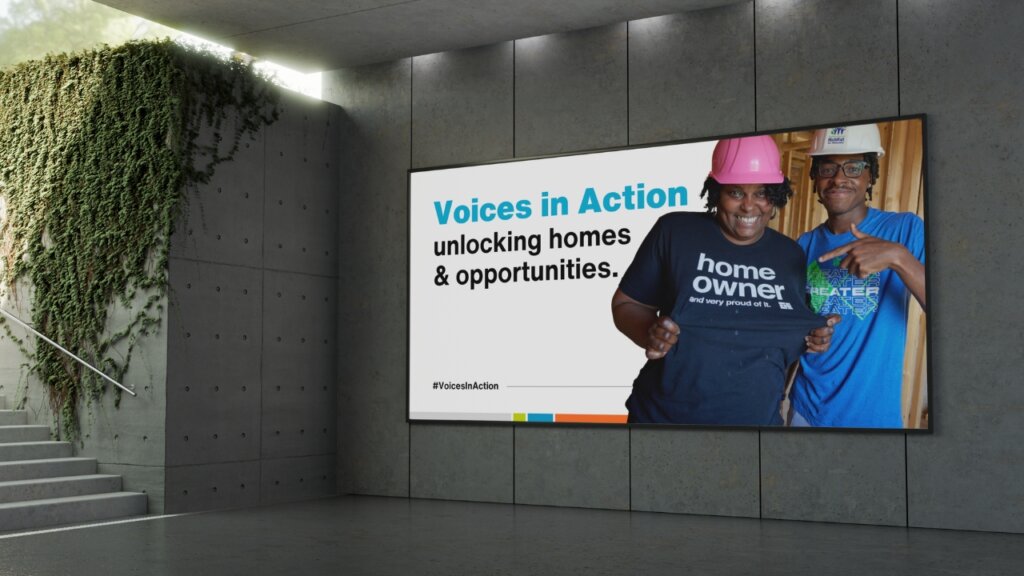Nonprofit Advocacy Strategies That Engage Your Community
Whether we like it or not, government policies shape the landscape where we work.
That’s why advocacy is critical to our success, but it can feel like it drags on FOREVER….
Let’s drill down on what really matters based on affiliate experiences, so you can spend your limited time most effectively.
Why is advocacy important for nonprofits to succeed?
Getting your organization to speak with one voice is hard—coordinating the voices of an entire community is even harder.
However, we know that legislators regularly survey the topics that people are contacting their office about. With enough people contacting your local legislator you can shift their attention and even spur action.
For this reason, being able to activate your community is very important.
To maximize your effectiveness, you will need to cultivate a one-on-one relationship with your representatives as well, which we will talk about later.
Choosing the Right Framing: Empathy Can Help You Activate Your Community
We all live busy lives.
So, we can’t blame someone if “raising your voice for land use reform” isn’t at the top of their list.
That doesn’t mean that people don’t care. It means that they don’t see how it impacts them.
Advocacy communications is about making the issue relatable to their lives. But it can be hard for your communications to break through during turbulent times.
Let’s consider possible motivations that you could use in our messaging to activate your community:
- They love Habitat’s mission. We can’t succeed without access to land and financing.
- They believe safe, decent housing is a human right.
- They care deeply for a family member, friend, neighbor or community member that can’t access housing.
- They care about community strength and equitable access to economic opportunities.
- They believe that homeownership is the foundation for generational financial success in America and want to see their community thrive.
- They feel frustrated that their own family can’t access housing despite their hard work.
Whatever motivates your community, incorporate a combination of these frames into messaging or segment your messaging depending on the audience you’re talking to.

Advocacy Campaign Toolkit Download
Whether you’re gearing up for Habitat on the Hill or rallying support at the local or state level, this advocacy marketing toolkit has the Canva design templates and content you need to start your advocacy campaign today.
Choosing the Right Tools: Multi-Channel Campaigns
It’s said that you don’t remember something until you hear it seven times.
Imagine how many times someone has to hear something in order for them to put it at the top of their To Do list.
If you want to get your community to take action, you need to make the problem easy to understand, consistent in your messaging and persistent in your communications.
Multi-channel marketing campaigns are one of the best ways to do this. Here are the key channels, and what makes them special:
- Social Media: Social content is easy to share and provides many different ways to tell the same story (video, infographic, image, story, etc.). Social media also makes it easy for people to take action on their phone with the click of a button.
- Email Marketing: Email can help you put a little bit more detail to the issue. It also has the advantage of sending people to longer-from content like blog posts, news articles and long-form videos.
- Website: Develop pages that break down the challenge, show evidence for how a possible solution could work and why Habitat is uniquely suited to make this happen.
- Direct Mail: Some might be surprised to see this tactic, but direct mail has proven time and again to be an impactful marketing channel when it comes to message retention.
- Public Speaking: You want a powerful speech? Bring someone up to tell their Habitat story and how it changed their family’s future. These events can also help generate content that can then be used on website, social and email.
- Community Events: People like to feel like they are a part of something bigger. Build a space where people can come together and feel the energy. Encourage them to post information on their personal social channels.
- Earned Media / Op Ed: Showcase your thought leadership and build a case for support by using more traditional media outlets.
- Influencer Marketing: Bring in a local superstar to champion your cause. They will likely have more reach and bring more gravity to the issue at hand.
Build Local Advocacy Capacity: Make Everyone an Advocate
For long-term success, invest in building local advocacy infrastructure. This means building advocates on your board, staff, homeowners, volunteers and community partners (amongst others).
To maximize their impact, consider these training strategies to empower your team to make an impact:
- Partner with Experts: Bring in grassroots organizers or advocacy consultants to help train your staff and volunteers.
- Set Clear Goals: Define what you’re trying to achieve and tailor efforts to community needs.
- Provide Practical Training: Focus on skill-building (public speaking, organizing events) using workshops and role-play exercises.
- Make It Accessible: Offer evening or weekend training, provide childcare, and make sure locations are easy to access.
- Build Networks: Foster collaboration between advocates by creating ongoing spaces for dialogue and support.
- Offer Pre-Made Resources: Provide templates for emails, talking points, and events.
- Start Small: Pilot programs with small groups, refine them, and expand.
Found on MyHabitat: Advocacy Affiliate Operating Manual (Login Required)
If can be frustrating to find anything on MyHabitat. Below is a link to a PDF that provides a great resource for building advocacy programs at your organization.
Engaging Local Government Representatives Effectively
Getting things done requires building trust and personal relationships.
Policy makers are going to be more likely to work with someone they know and trust.
It’s important to cultivate your relationship early – even as soon as they get elected if possible.
Build that trust and relationship before you have a specific ask. And, remember as a Habitat for Humanity affiliate you do have something to offer them, not just something to ask them for – especially if you are a good communicator with your community.
Face-To-Face: How to Build Lasting Relationships with Decision-Makers
Statewide advocacy days and Habitat on the Hill help build these recurring opportunities for sustained, in-person engagement with elected officials. But, you don’t need to wait for these events to start (or continue) building those relationships.
There’s no more impactful experience for people than participating in a Habitat event – engaging with volunteers, AmeriCorps, homeowners and staff.
Consider inviting your local policy makers to join for an event:
- Host quarterly breakfast meetings with city council members
- Invite officials to groundbreaking and dedication ceremonies
- Invite officials to special build events with business leaders
- Invite officials to commemorative events like 9/11 Day of Service, Veteran’s Day, Martin Luther King Jr. Day or World Habitat Day
- Invite officials to speak during any event
- Organize annual housing forums with local leaders
Found on MyHabitat: Legislator Introductory Letter (Login required)
Looking for ways to connect with your newly elected legislator? Use this introductory template to start to cultivate your relationship. Read more.
Making an Impact at Local Public Meetings
It may sound quant to be at local public meetings, but that’s often where the rubber meets the road. Here are some tips for public meeting participation:
- Prepare speakers with clear talking points
- Bring supporters wearing Habitat shirts
- Submit written testimony with data backing your position
- Follow up with decision-makers after meetings

Creative Tools for Community Advocacy
To succeed with community advocacy we need to make it easy for people, community partners and community organizers to be part of a larger movement.
We can make it easy on them by providing tools for them to be a champion for the cause.
Here are some ideas:
Digital Tools & Resources
- Shareable Social Media Content: Videos, graphics and copy/paste content that people can share on their personal channels.
- Social Media Infographics: Visually engaging, shareable graphics that break down the problem, proposed solution, and potential impact in your community.
- Explainer Video: A short, engaging video outlining the importance of the proposition and how it will make affordable homeownership more achievable.
- FAQs Document: A downloadable or online resource addressing common questions and concerns about the proposition.
- Hashtag Campaign: A unifying hashtag supporters can use to tie together their social posts and build online momentum (e.g., #HomeForAll or #YesOnHousing).
- Virtual Backgrounds: Branded Zoom/Teams backgrounds with campaign slogans for supporters to use during virtual meetings.
- SMS/Text Scripts: Pre-written text message templates for supporters to send to friends and family to encourage action.
- Pre-Written Emails: Pre-written email messages supporters can send to their networks explaining the proposition and urging them to vote/support it.
- Social Media Filters/Frames: Branded filters or profile frames for Facebook and Instagram to show support visually.

In-Person & Physical Materials
- Yard Signs: Simple and impactful lawn signs that show support for the proposition.
- Flyers & Door Hangers: Easy-to-read flyers that supporters can hand out or leave at local businesses and neighbors’ homes.
- Buttons & Pins: Small, wearable items with slogans like “Support Affordable Housing” to spark conversations.
- Stickers: Branded stickers for laptops, water bottles, or cars to increase visibility.
- T-Shirts & Hats: Branded clothing to amplify the message and create a sense of unity among supporters.
Action-Oriented Resources
- Letter-to-the-Editor Templates: Drafts of letters supporters can customize and submit to local newspapers.
- Community Action Toolkit: A comprehensive guide with instructions for hosting house parties, making phone calls, and other grassroots activities.
- Postcard Campaign: Pre-printed postcards with a call-to-action supporters can send to decision-makers.
- Volunteer Sign-Up Forms: Easy ways for supporters to register for campaign efforts, such as canvassing or staffing an event.
- Public Meeting Resources: Talking points or presentations supporters can use when attending city council or zoning board meetings.
Community Engagement
- Event Promotion Kits: Graphics and copy to promote local rallies, house parties, or town halls related to the proposition.
- Local Stories Toolkit: Guidelines and examples for supporters to share their personal stories about housing challenges and the need for affordable options.
- Petition Drives: Both online and in-person petitions to gather signatures of support and show community buy-in.
- Advocacy Challenges: Gamify involvement by creating challenges like “Post 3 reasons you support housing affordability this week.”
Engaging Local Community Partners in Coalitions
Don’t forget that local businesses, schools and faith communities can play a powerful role as leaders in our community. Their voice carries weight too.
Here are some resources to consider building:
- Faith-Based Toolkit: Materials for faith leaders to use in sermons or bulletins encouraging support for the proposition.
- Small Business Partner Kit: Resources for local businesses to share information with their customers (e.g., posters or cash register inserts).
- School/Parent Toolkit: Flyers and resources tailored for school events or parent groups, highlighting how affordable housing impacts families.
- Coalition Building Resources: Customizable outreach emails and resources to engage other organizations and groups to amplify your efforts.
Understanding Advocacy Rules for 501(c)(3) Organizations: What Can Your Affiliate Do?
In some cases, it can be confusing about what a 501(c)(3) organization is allowed to do when it comes to advocacy. Let’s break down what’s allowed and what’s not.
What Your Affiliate CAN Do
- Educate legislators about affordable housing issues
- Share research and data about housing needs in your community
- Invite elected officials to build sites and home dedications
- Take positions on housing policies and regulations
- Submit testimony for public hearings
- Encourage partner families and volunteers to contact their representatives
- Create nonpartisan voter registration drives
- Publish nonpartisan voter guides about housing issues
- Organize site visits for legislators to see your work firsthand
What Your Affiliate CANNOT Do
- Endorse or oppose any candidate for public office
- Donate money or resources to political campaigns
- Rate candidates or create partisan voter guides
- Let candidates use your resources for campaign purposes
- Spend a “substantial” portion of your activities on lobbying
Smart Strategies for Compliant Advocacy
- Focus on issues, not elections
- When discussing housing policies, address the policy itself rather than the politician proposing it
- Keep detailed records of time spent on advocacy activities
- Consider filing the 501(h) election to get clear spending limits for lobbying
- Maintain nonpartisan messaging in all communications

